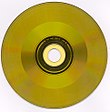DictionaryArrangement |
| Buy sheetmusic at SheetMusicPlus |
The American Federation of Musicians defines arranging as "the art of preparing and adapting an already written composition for presentation in other than its original form. An arrangement may include reharmonization, paraphrasing, and/or development of a composition, so that it fully represents the melodic, harmonic, and rhythmic structure" (Corozine 2002, p. 3). Orchestration differs in that it is only adapting music for an orchestra or musical ensemble while arranging "involves adding compositional techniques, such as new thematic material for introductions, transitions, or modulations, and endings...Arranging is the art of giving an existing melody musical variety" (ibid).
Classical musicArrangements and transcriptions of classical and serious music go back to the early history of this genre. In particular music written for the piano frequently underwent this treatment.[citation needed] The suite of ten piano pieces Pictures at an Exhibition by Modest Mussorgsky, has been arranged over twenty times, perhaps the most famous and notable being that of Maurice Ravel.[citation needed] Due to a poor grasp of the ability to do so himself, the American composer George Gershwin had his Rhapsody in Blue orchestrated and arranged by Ferde Grofé.[1] Popular musicArrangers in pop music recordings often add parts for orchestral or band instruments involving new material such that the arrangers may reasonably be considered co-composers, although for copyright and royalty purposes usually are not.[citation needed] Rhythm section parts are usually improvised or otherwise invented by the performers themselves using chord symbols or a lead sheet as a guide.[citation needed] (Rhythm section instruments usually include guitars, bass guitars, string basses, piano and other keyboard instruments, and drums.) An existing pop song can be re-recorded with a different arrangement to the original. As well as different instruments, the tempo, time signature and key signature may be altered, sometimes drastically so. The end result is a song that retains familiar phrases and lyrics, but offers something new.[citation needed] This practice was particularly popular in the late 1960s. Well known examples of this include Joe Cocker's version of The Beatles' With a Little Help from My Friends, and Ike And Tina Turner's version of Creedence Clearwater Revival's Proud Mary. The American group Vanilla Fudge and British group Yes based their early careers on radical re-arrangements of contemporary hits.[citation needed] Some remixes, particularly in dance music, can also be considered re-arrangements in this style.[citation needed] JazzIn jazz an unscored collaborative arrangement is called a "head arrangement" (Randel 2002, p. 294; it is in the head of the musician(s)). Big bands such as those of Duke Ellington (at the very beginning of his carrier), Bennie Moten, and Count Basie performed head arrangements (ibid). Arrangements for small jazz combos are usually informal, minimal, and uncredited. This was particularly so for combos in the bebop era. In general, the larger the ensemble, the greater the need for a formal arrangement, although the early Count Basie big band was famous for its head arrangements, so called because they were worked out by the players themselves, memorized immediately and never written down. Most arrangements for large ensembles, big bands, in the swing era, were written down, however, and credited to a specific arranger, as were later arrangements for the Count Basie big band by Sammy Nestico and Neal Hefti. Don Redman made significant innovations in the pattern of arrangement in Fletcher Henderson's orchestra in the 1920s. He introduced the pattern of arranging melodies in the body of arrangements and arranging section performances of the big band. Billy Strayhorn was an arranger of great renown in the Duke Ellington orchestra beginning in 1938. Jelly Roll Morton is considered the earliest jazz arranger, writing down the parts when he was touring about 1912-1915 so that pick-up bands could play his compositions. Big band arrangements are informally called charts. In the swing era they were usually either arrangements of popular songs or they were entirely new compositions. Duke Ellington's and Billy Strayhorn's arrangements for the Duke Ellington big band were usually new compositions, and some of Eddie Sauter's arrangements for the Benny Goodman band and Artie Shaw's arrangements for his own band were new compositions as well. It became more common to arrange sketchy jazz combo compositions for big band after the bop era. After 1950, the big band trend declined in number. However, several bands continued and arrangers provided renowned arrangements. Gil Evans wrote a number of large-ensemble arrangements in the late fifties and early sixties intended for recording sessions only. Other arrangers of note include Vic Schoen, Pete Rugolo, Oliver Nelson, Johnny Richards, Billy May, Thad Jones, Maria Schneider, Bob Brookmeyer, Steve Sample, Sr, Lou Marini, Nelson Riddle, Ralph Burns, Billy Byers, Gordon Jenkins, Ray Conniff, Henry Mancini, Gil Evans, Gordon Goodwin, and Ray Reach.
See also
Notes
Sources
| |||||||||||||||||||||||||||||||||||||||
This article is licensed under the GNU Free Documentation License. It uses material from the Wikipedia article "Arrangement". Allthough most Wikipedia articles provide accurate information accuracy can not be guaranteed. | |||||||||||||||||||||||||||||||||||||||
Help us with donations or by making music available!
©2023 Classic Cat - the classical music directory

Chopin, F.
Preludes
Eugene Dolan
Mozart, W.A.
Requiem
Vienna Philharmonic
Offenbach, J.
Orpheus in the Underworld
Orchestre Philharmonique de Paris
Satie, E.
Embryons Desséchés
Chris Mansi
Chopin, F.
Preludes
Eugene Dolan
Verdi, G.
Don Carlos
Raphaël Arié


